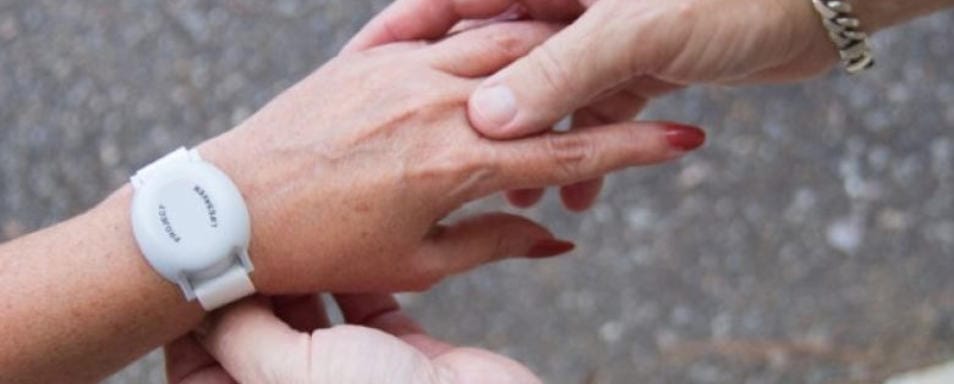KJIPUKTUK (Halifax) – There is always a reason why a neurodivergent person is a so called flight risk, and wanders off. That obvious observation is too easily lost when solutions such as tracking devices become the focus.
In April 2017, Autism Nova Scotia released the report “Choosing Now: Investing in Nova Scotians Living with Autism”, which identifies various areas where autistic people need more supports throughout their lives.
Some of their proposed recommendations are good, others not so much. For now I just want to look at the section which is by far the most problematic: the section on “Safety in Communities.”
Safety in Communities
The section begins as follows:
“Safe communities are accommodating and supportive communities. For families of people with ASD, a common concern may be how their loved ones will be treated as they venture into the community, and, particularly for those caring for people with more significant support needs, if authorities and first responders will know how to react to them.”
The section then focuses on what always seem to be the two most commonly discussed “safety issues” when it comes to autistic people: wandering, and police interactions.
For this piece, I want to focus on the issue of wandering, or “elopement.” I will have more to say about police interactions soon.
Wandering
As the Choosing Now report says,
“For families caring for persons with ASD who also have an intellectual disability, and/or who are non-verbal, a common concern is that their loved one may wander into the community and become lost or find themselves in dangerous situations.”
Autism NS has been collaborating with Project Lifesaver, a nonprofit that provides equipment and training for law enforcement and search & rescue organizations to help them locate neurodivergent people who have wandered off. (They don’t use the word “neurodivergent” in any of their public information.)

Each person enrolled in this program wears a water-resistant directional radio transmitter on their wrist or ankle that emits a unique frequency. The program is funded by the Nova Scotia Emergency Management Office, part of the Department of Justice, to the tune of $278,000 per year. Furthermore, according to the report,
“Since the inception of Project Lifesaver in this province, there have been several calls for service from families supporting people with ASD, all resulting in successful rescues. In one case, a young girl with autism was found 2 kms from her home and close to water – a situation that could have become much more dangerous if she had not been located quickly. Project Lifesaver sees its service to the ASD community as an integral part of its work.”
On the surface, this may seem like a good idea. And if they have in fact helped locate autistic or other neurodivergent people who have wandered off, that’s a good thing. No one denies that safety is paramount.
Here’s the thing…..nobody seems to be asking why autistic children (it’s almost always children who are the focus of this discussion) wander off. Is it because of sensory overload? Is it because they’re being abused or mistreated in some way? Or is there another reason?
If those are the reasons, then a GPS tracking device will provide little, if any, lasting solutions.
There is always a reason why autistic children wander or “elope”
If an autistic child wanders off because of sensory overload, then they should be provided with sensory integration assistance. If they are wandering off to escape mistreatment, then the best way to prevent that is obviously to deal with the person mistreating them rather than return them into to the charge of the abusive parent or caregiver.
There’s another issue at play here, regarding communication. If an autistic person has a tracking device on them at all times, the message it sends to people with inadequate knowledge of autism that they are incompetent and unreliable regarding claims of abuse.
Many neurotypicals, especially parents, tend to use issues of wandering as a scaremongering tactic, trying to separate the issues and concerns of adult autistic activists from those of so-called “severely” autistic children. This message runs counter to autism acceptance.
If not GPS tracking, then what?
As stated above, sensory integration techniques would be a good start, mainly for those who are running from sensory-unfriendly environments. ID bracelets with the autistic person’s contact info on them would also be helpful. Providing a smartphone and teaching safety and GPS map reading skills are other mechanisms.
Most of all, the neurotypical parents, professionals, law enforcement and search and rescue officials need to understand that behaviour is communication.
When we hear stories of autistic people (mostly children) wandering or eloping, neurotypical parents nearly always jump on this and talk about their own kids who are apparently a “flight risk” and try to make a case for GPS tracking. But however helpful they may seem, it is extremely important to prevent wandering in the first place by figuring out what’s causing it to happen.
With a special thanks to our generous donors who make publication of the Nova Scotia Advocate possible.
Subscribe to the Nova Scotia Advocate weekly digest and never miss an article again. It’s free!




Dealing with the topic of elopement is a tough subject. Honestly I’d have to say after over 15 years in the Autism Community, this article missed the mark.
There is more to addressing behavioral issues like elopement than just saying its “communication”.
Autism Families rely on safety devices to help them keep their children safe. Law enforcement relies on Organizations like Project Lifesaver International to train their Officers on how to appropriately address situations where an autistic individual is involved.
Families rely on first responders to know how to help their kids during crisis situations.
Devices like GPS and/or radio transmitters like what PLI provides are often the only difference in saving a child’s life while the parents and professionals work with the child to discover what may be causing those elopement activities.
As an editor, I’m rather disappointed at the lack of investigative journalism applied in this article. However, it does display how little the media and general public understands the variety of nuances associated with autism. This just means there is a lot more education that needs to be done.
I’m saddened by the lack of understanding regarding the need for tracking devices. I’m a firm believer in identifying the reason for the behavior and making every possible attempt at prevention. But (like all other autism parents), I know that, despite the tremendous effort we make, we are not always able to control our children’s behaviors.
Let me explain an example… My son used to wake up in the middle of the night and wander. We had him on a sensory diet during the day and followed the advice of an occupational therapist. We used several tactics to help him sleep, including a white noise machine, weighted blanket, essential oils, etc. We saw a biomedical Dr and a nutritionist and put him on supplements in addition to modifying his diet (switched to gluten and casein free and removed dyes and preservatives). We removed screen time before bedtime. We also tried melatonin and CBD oil. We did 16 hours a week of Behavioral Health Rehabilitation Services to address behaviors, both social and emotional. We spoke with our pediatrician about the possibility of sleep apnea. We saw a neurologist to see if he could be having absence siezures.
The process of trying to resolve sleep disturbances wasn’t a simple fix. This required years of trial and error. So, identifying the cause and preventing is easier said than done. But, as an autism parent, that’s often the case… People on the outside have all of the answers, but not a clue what it’s like to walk in our shoes.
Sometimes you need a safety net for when prevention isn’t possible. I installed extra deadbolts and battery operated alarms on my doors. But, what about when we are on vacation somewhere that doesn’t have these? Or, what happens when he decides to wander during recess?
An ID tag is great if someone finds the child promptly and sees it. But, those aren’t usually the dangerous scenarios… If someone finds a lost child they can always simply call the police (and I’m sure the police can keep the child safe until they are reunited with the parents). But, it’s those times when a child elopes and finds their way into a body of water before someone finds them first…
Seeing a tracking device on a child doesn’t make them appear to be an easy target. These kids are already susceptible to people who will take advantage of their disability. This has gone on long before the technology was available. People can tell pretty quickly that a child can’t speak or comprehend. But, a tracking device might make it easier to find a child who is kidnapped.